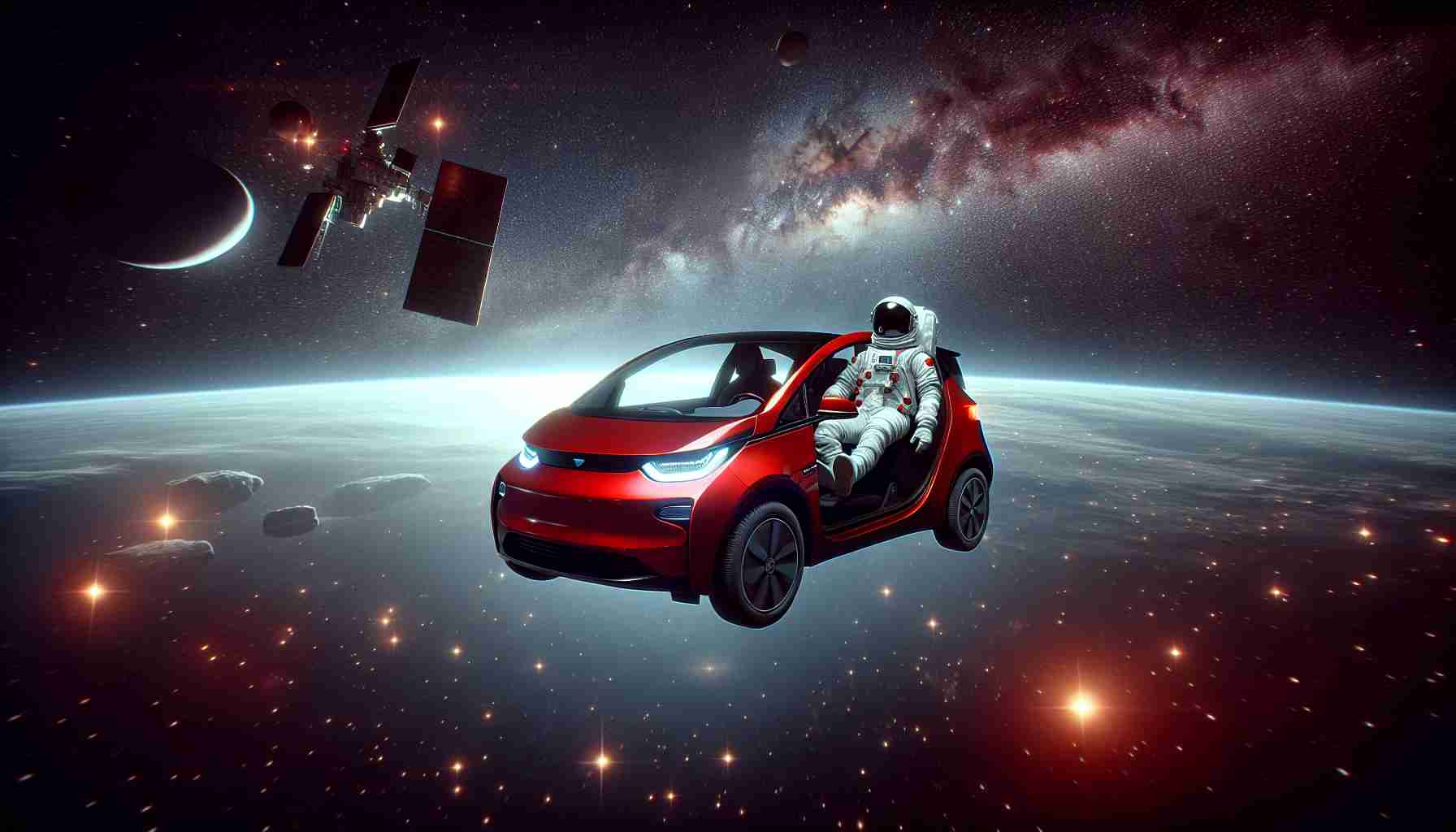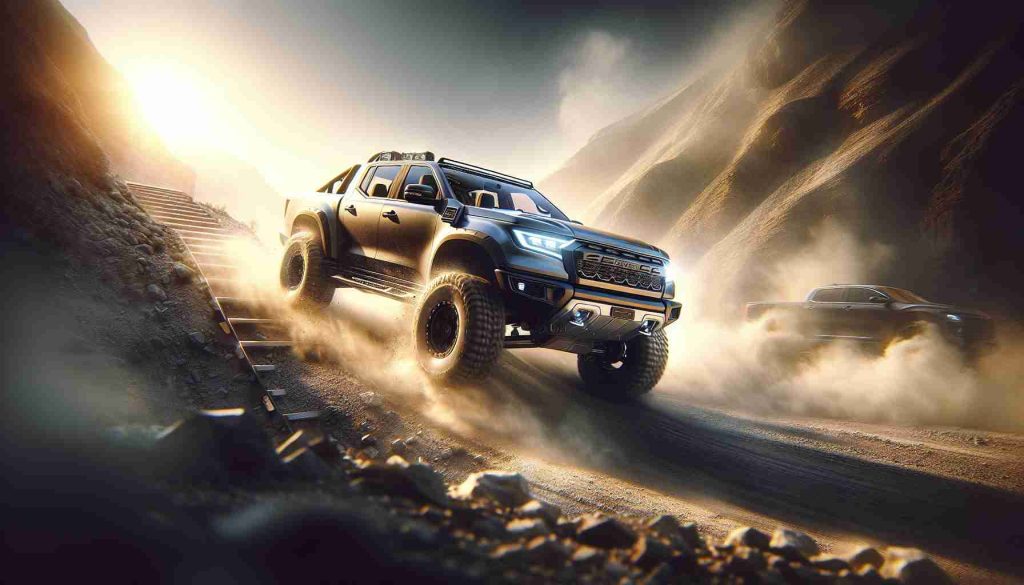The cosmic comedy continues!
In a bizarre twist of fate, astronomers recently mistook Elon Musk’s Tesla Roadster for an asteroid. This mix-up occurred seven years after the car was launched into space during the inaugural flight of SpaceX’s Falcon Heavy rocket in February 2018. The Minor Planet Center at Harvard-Smithsonian Center for Astrophysics initially registered the object as 2018 CN41, only to retract it the following day when they discovered its true identity.
Upon examination, they recognized that the orbit of the object aligned with Musk’s iconic Roadster, which was designed to enter an elliptical orbit around the sun. Instead of following a typical path, the vehicle surpassed Mars’ orbit and ventured toward the asteroid belt.
At the time of the misidentification, the Roadster was remarkably close to Earth—less than 150,000 miles away, a distance surpassing that of the moon. This prompted a call for enhanced monitoring of such “untracked” objects, as highlighted by astrophysicist Jonathan McDowell, who commented on the potential pitfalls of confusing artificial satellites with asteroids.
With such high stakes in space exploration, the incident serves as a humorous reminder of the complexities faced by astronomers tracking objects in our solar system. SpaceX did not provide immediate comment on this amusing entanglement between technology and astronomy.
Cosmic Misidentifications and Their Global Implications
The recent episode of astronomers mistaking a Tesla Roadster for an asteroid underscores broader implications for society, culture, and the global economy. As the boundaries between technology and astrophysics blur, the need for precise tracking of man-made objects in space has never been more critical. With the rise of commercial space exploration, the number of satellites and other debris in Earth’s orbit is growing exponentially, potentially leading to complications for both scientific exploration and telecommunications.
The incident raises vital questions about space governance and international cooperation in monitoring space activities. As commercial ventures like SpaceX lead advancements in space travel, nations must enhance collaborative measures regarding satellite registration and tracking, thereby safeguarding vital infrastructures and ensuring sustainable practices in the cosmos.
Environmentally, there’s an urgent need to consider the consequences of increasing space traffic. The proliferation of satellites—currently estimated at over 3,300 by the U.S. Federal Communications Commission—can contribute to space debris, posing a danger to both future missions and Earth’s atmosphere. Long-term, with more private entities entering the space race, it’s imperative to establish regulations that prioritize ecological stewardship beyond our planet.
As we soldier on into this new era of space exploration, the intermingling of technology and the universe reflects an inevitable reliance on space as a resource and a frontier. The Tesla misidentification serves as a whimsical reminder of the hurdles we face in this uncharted territory, compelling us to rethink our approach toward cosmic stewardship.
The Unexpected Asteroid: How Elon Musk’s Tesla Roadster Sparked Astronomical Confusion
Overview of the Incident
In an unusual event that captured the attention of both the astronomical community and the public, astronomers recently mistook Elon Musk’s Tesla Roadster for an asteroid. This incident occurred seven years after the car was launched into space during the challenging inaugural flight of SpaceX’s Falcon Heavy rocket in February 2018. Initially cataloged as 2018 CN41 by the Minor Planet Center at Harvard-Smithsonian Center for Astrophysics, the object was later retracted when the true identity of the vehicle came to light.
Orbit and Distance Insights
The Roadster was uniquely designed to enter an elliptical orbit around the sun, and its trajectory allowed it to surpass Mars’ orbit and move toward the asteroid belt. At the time of the misidentification, the Roadster was located less than 150,000 miles from Earth, which is a mere fraction of the distance to the moon. Such close proximity spurred discussions about the need for enhanced monitoring systems for “untracked” objects in space.
Importance of Space Monitoring
The incident underscores the growing necessity for improved tracking mechanisms as the number of objects in space increases. With private companies launching vehicles and satellites at an unprecedented rate, there’s a rising risk of confusion between artificial satellites and natural celestial bodies. Jonathan McDowell, an astrophysicist, emphasized the confusion’s potential risks and the need for vigilance in monitoring space activities.
Pros and Cons of Space Object Tracking
Pros:
– Increased Safety: Better tracking can prevent collisions between spacecraft and untracked objects, helping to secure future missions.
– Scientific Advancement: Accurate data on trajectories and orbits enrich scientific research and improve our understanding of the solar system.
Cons:
– Cost: Enhanced tracking technologies and systems can be expensive to develop and maintain.
– Complexity: The vast number of objects makes accurate tracking a complex challenge, particularly with limited resources.
Trends and Innovations in Space Tracking
The need for improved monitoring systems has led to various innovations in recent years, including:
– Satellite Constellations: Companies like SpaceX are developing networks of satellites that not only provide internet access but can also aid in monitoring space debris and other objects.
– Artificial Intelligence: AI algorithms are being employed to analyze data from telescopes and predict the paths of various celestial objects more efficiently.
Security Aspects
Security is a vital concern in space tracking, especially as more entities enter space exploration. Potential threats include:
– Space Debris: Unmonitored debris poses risks to active missions.
– Data Security: Protecting the data gleaned from tracking systems is crucial to prevent it from falling into the wrong hands.
Predictions for the Future
As we look ahead, it is expected that:
– Global Collaboration: There will be a push towards international partnerships to enhance tracking capabilities and information sharing.
– Investment in Technologies: Increased funding and support for developing advanced tracking systems is on the horizon, ensuring safer and more effective space exploration.
In conclusion, while the confusion over Musk’s Tesla was indeed amusing, it serves as a serious reminder of the challenges facing modern astrophysics and space exploration. Enhanced tracking and understanding of our orbital neighbors are more critical than ever as the future of space exploration expands.
For more on space technologies, visit SpaceX.
















